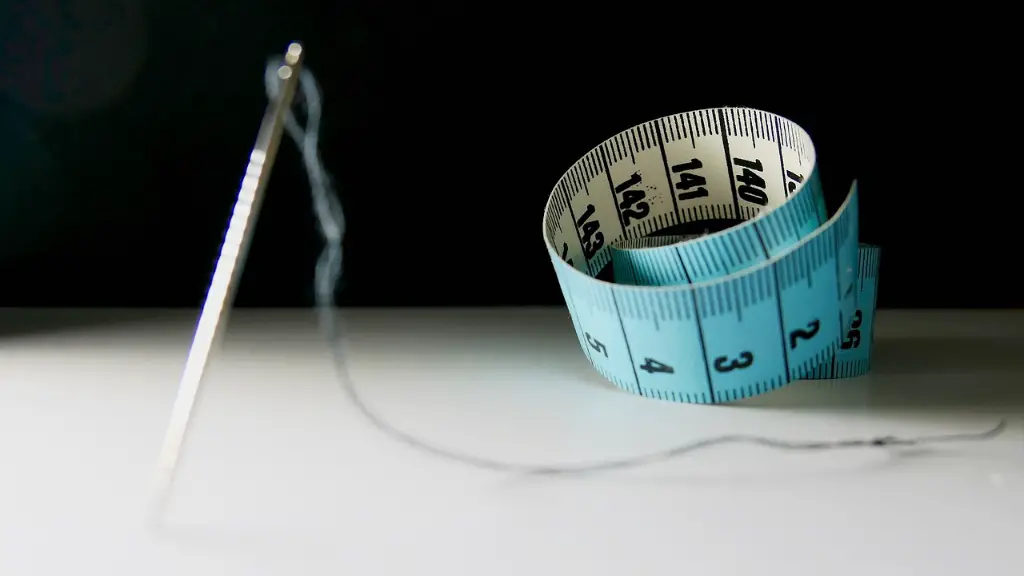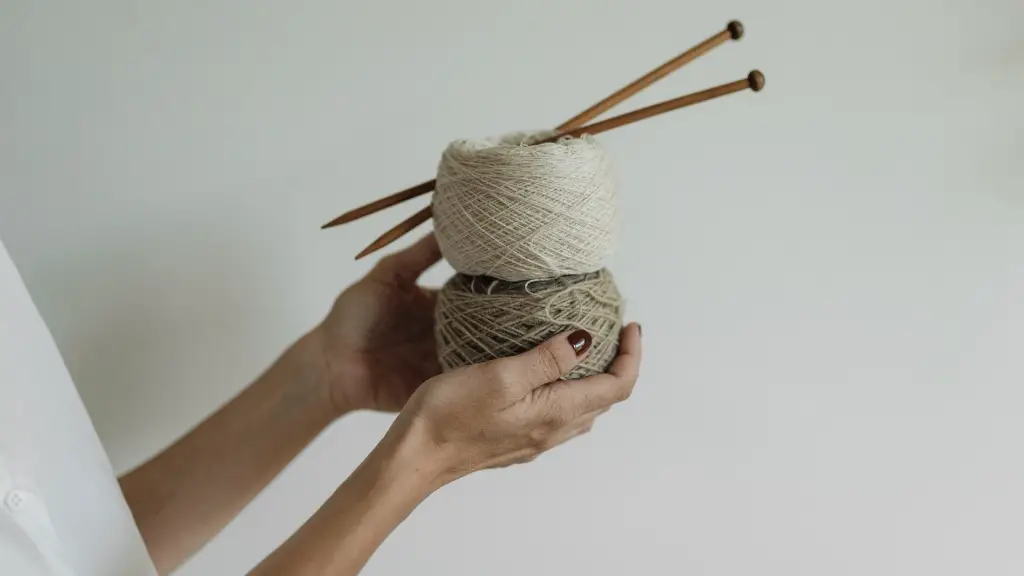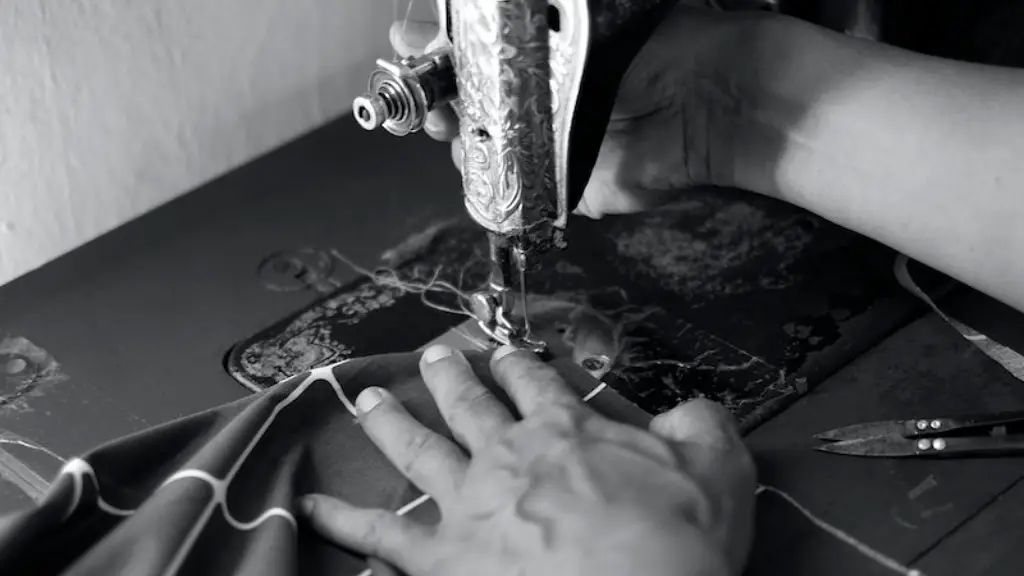Overview
Metallic threads can add a unique texture and shimmer to garments, making them ideal for evening wear, tailoring, and couture fashion. But is it possible to use them on a regular sewing machine? The answer is yes, although using metallic threads in a sewing machine has several challenges. This article looks at the different types of metallic thread, how to prepare a machine for stitching with them, and the best techniques for working with metallic threads.
Types of Metallic Threads
Metallic threads come in many varieties, including those of different materials, finishes and weights. The most common type of metallic thread is made of a metal core, such as zinc or aluminum, and is covered with a thin film of plastic or metallic foil. These type of threads can be monofilament, meaning that the thread is composed of a single solid strand, or multifilament, meaning that the thread is composed of several strands of different materials.
The weight of metallic threads also varies greatly, ranging from low to high. Low-weight threads are best suited for light fabrics, while heavier threads are more suitable for heavier fabrics. Different types of metallic thread also require different types of stabilizers, such as water-soluble or non-woven, to ensure that the stitching does not pull and that the metallic thread does not break. Choosing the right type of thread for a project is an important step in successful sewing.
Preparing the Machine for Stitching
When preparing a machine to stitch with metallic thread, it is important to make sure that the machine is properly adjusted. Start by changing the needle and adjusting the tension. A heavier and sharper needle should be used, and the tension should be adjusted so that the thread pulls easily and is not too tight.
It is also important to make sure that the machine is properly maintained and lubricated. Most metallic threads have a bit of friction, and any dust or dirt that accumulates on the machine can create an even greater amount of friction that can cause the metallic thread to break. Clean and lubricate the machine regularly to ensure that it runs smoothly.
Techniques for Working with Metallic Thread
When stitching with metallic thread, it is important to use the correct technique. Start by using a slightly slower than normal stitch speed. This will help to ensure that the thread does not break or gather under the needle.
The most important factor when stitching with metallic thread is to ensure that the upper thread, or the thread that is being drawn through the machine, is properly secured. To secure the upper thread, place a metal or cloth thimble on your finger and lightly tug the thread as it is being drawn through the machine. This will help to keep the upper thread from slipping and will keep the thread from gathering under the needle.
Using Metallic Threads in Embroidery
Metallic thread is also ideal for use in embroidery. To add the metallic thread to an embroidery design, it is essential to use an appropriately sized needle and adjust the tension of the machine. It is also important to ensure that the metallic thread is secured both at the embroidery machine and at intervals along the way.
To ensure that the metallic thread is secure, use a locking stitch at the beginning and end of the design. This will prevent the metallic thread from being pulled or drawn out of the design. Additionally, attaching weight to the edges of an embroidery design will help to keep the metallic thread from slipping or fraying.
Tips for Working with Metallic Thread
Using metallic threads in a sewing machine can be challenging, but with a few tips, it is easy to achieve professional-looking results. Here are some tips for using metallic threads in a sewing machine:
- Start by experimenting on scrap fabric, adjusting the tension and stitch speed until the desired results are achieved.
- Use an appropriately sized needle for the weight of the metallic thread.
- Use a stabilizer on the wrong side of the fabric to prevent the metallic thread from pulling.
- Secure both the upper and lower threads to ensure that the thread does not slip or gather under the needle.
- Work on an even surface to ensure that the metallic thread does not gather or knot.
Metallic Embellishments
Metallic threads can also be used to create unique embellishments for garments. By stitching around the edges of fabric pieces with a metallic thread, it is possible to create lace-like embellishments. Use multiple strands of thread in contrasting colors, such as gold and silver, to create a more intricate look.
Alternatively, metallic thread can be used in a free-motion embroidery hoop to create detailed embellishments. This is a great way to add texture and sparkle to garments and is ideal for adding personalized flourishes to clothing and accessories.
Thread Weaving
Thread weaving is a technique used to create intricate patterns with metallic threads. By weaving multiple threads together, it is possible to create intricate designs that will add texture and shine to garments.
The process for creating thread weaving designs is relatively simple. Start by pulling a few strands of thread through a fabric and securing them in place. Take the next strand of thread and weave it over and under the threads below, then continue weaving and pulling the strands together until the desired pattern is achieved. Using this technique, it is possible to create unique textural designs that will elevate any garment.
Caring for Metallic Threads
When caring for metallic threads, it is important to store them in a cool, dry place and to protect them from sunlight. Sunlight can cause the metallic thread to fade, especially if the thread is exposed to direct sunlight for an extended period.
When washing garments that have been stitched with metallic threads, use a detergent specifically designed for delicate fabrics. Do not use bleach or fabric softeners, and use a gentle cycle and cool water to minimize wear and tear on the threads.
Finishing Techniques
When working with metallic threads, it is important to use the proper finishing techniques. To ensure that the metallic thread does not pull or fray, it is best to secure the ends with a knot or to use a thread sealer. Thread sealers are easy to use and provide a quick and secure finish for threads.
Additionally, it is important to apply a fabric finish, such as Fray-Check or Seal-a-Seam, to the fabric to help protect the metallic threads from being pulled or fraying. These fabric finishes will also help to seal and protect the fabric, which can help extend the life of the garment.


